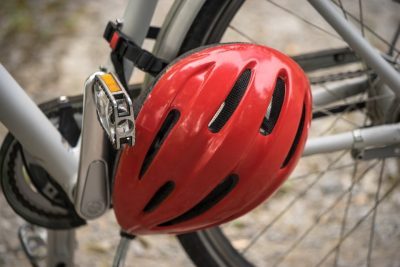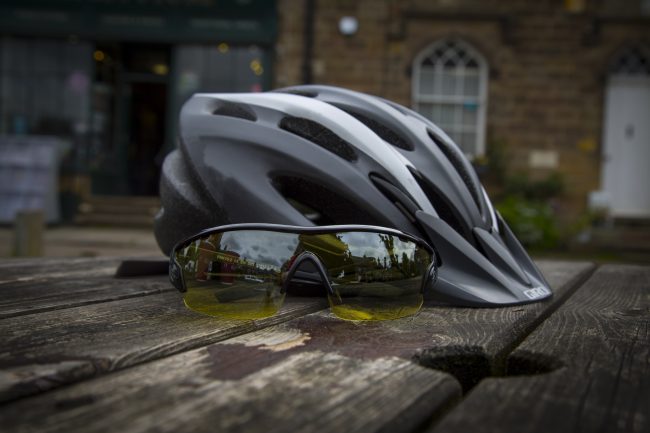A helmet for the bicycle is used to protect the head of the cyclist in the event of impact. What it has to guarantee is therefore absorption and protection. Every helmet sold in the EU must clearly show, usually inside, certification attesting compliance with legislation in force.
What distinguishes an economical helmet from one more expensive is therefore lightness, ergonomics, materials choice, ventilation capability, straps resistance, and overall comfort.
The helmet is a key element for the cyclist, the only protection he has in the event of a fall. Given its importance, it is necessary treat it with special consideration by not drop it because it could be damaged and not work at the right time. As soon as you have doubts about its reliability is better to change it.
A bike helmet is made up of:
- Outer shell – Polycarbonate or carbon fiber, treated to resist weather conditions. It is also the part most aesthetically pleasing. Being smooth and light, in case of fall, it reduces friction with asphalt and avoids dangerous objects reaching the head of the cyclist.
- Inner shell – in polyurethane joined by welding to the outer shell. It is the part that deforms after the collision avoiding that the force of impact reaches the skull and hence the brain causing a trauma.
- Rear fastening – a small wheel that allows you to widen or tighten your helmet around back of your head.
- Straps – They fix the helmet under your chin to prevent it from falling out of your head during use.
There are several types of helmet that fit the needs of cycling disciplines:
Helmet for CYCLING ON ROAD
Tapered, aerodynamic, and very lightweight. Ventilation is also highly emphasized, there are numerous nozzles.
Helmet for MOUNTAIN BIKING
In the case of mountain bikes, the helmet also serves to protect the biker from possible accidents with branches, pebbles, rocks. It must protect not only the neck but also the temples.
Helmet for OFF-ROAD
Disciplines such as the down-hill or the enduro need helmets that completely protect the head and face of the cyclist and for this they look like the helmets used for the motocross.
Helmet for FREE-STYLE
The BMX presumes jumps and twists, so the cyclist must be protected both on the temples, on the back of the neck and forehead. They are very heavy helmets with a little aerodynamic shape.

– the presence of the CE mark on the label
– the integrity of the outer and inner shell
– the strap resistance
– the quality and resistance of the snap closure
– wear-ability (if too large or too small)
